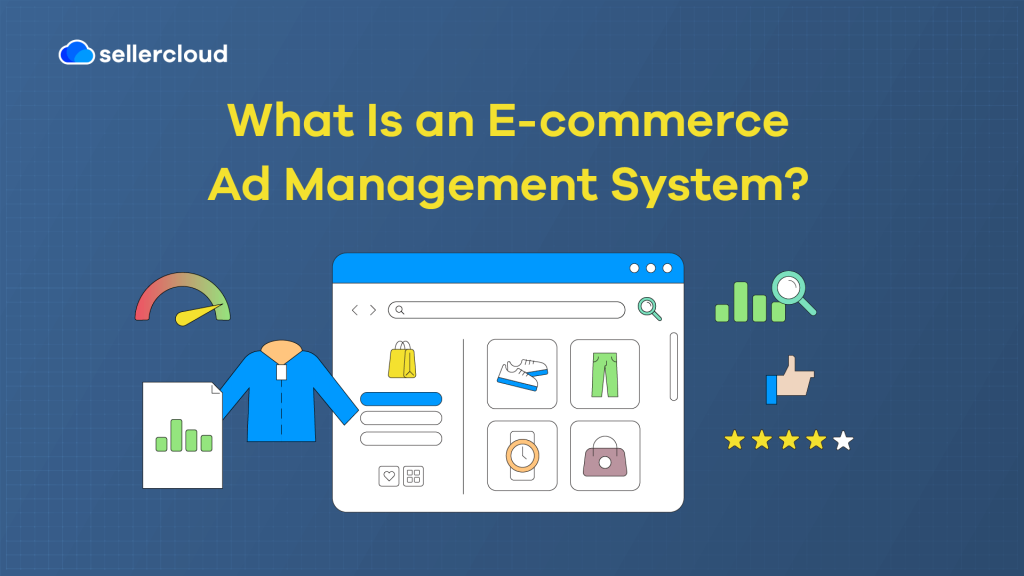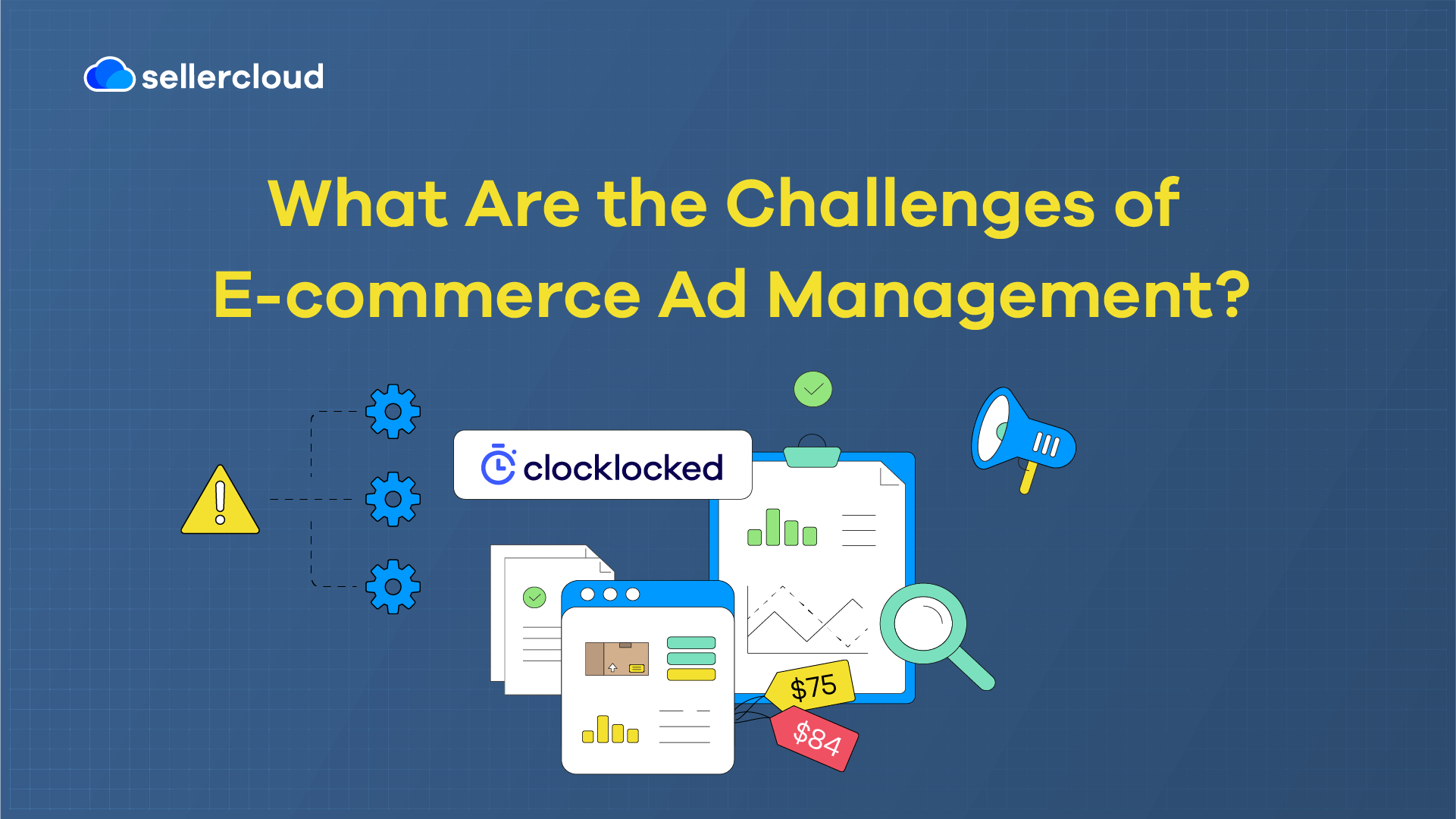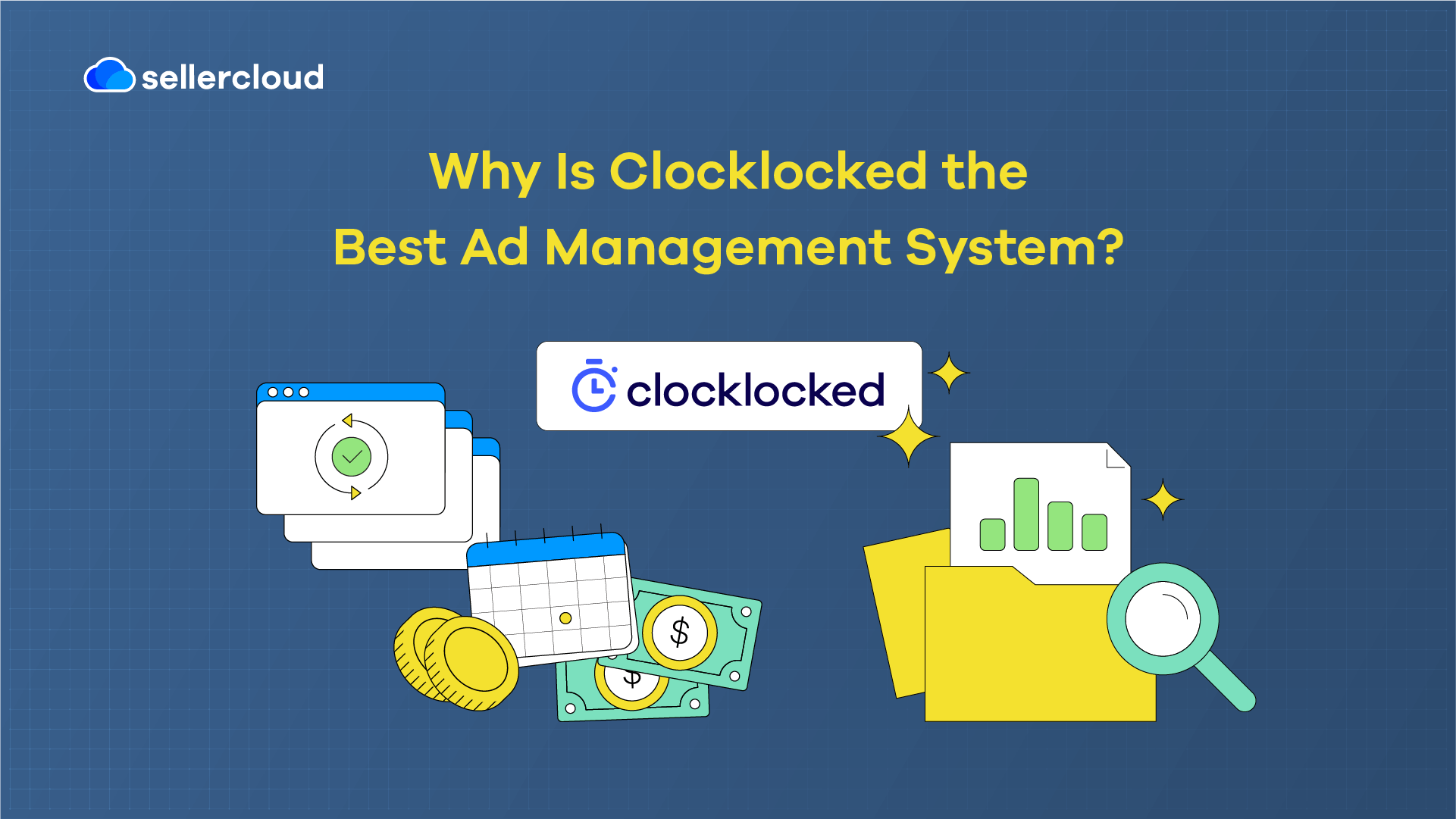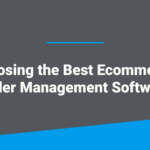
- Online sellers use ecommerce ad management systems to create, monitor, and improve the efficiency of their campaigns to increase sales. However, this is an expensive endeavor.
- Clocklocked is Descartes Sellercloud’s ecommerce ads management system designed to help sellers get the most out of their Amazon ads and Walmart Connect campaigns.
How a business manages its ad spend is critical. Ads can consume a significant chunk of a company’s budget, and ecommerce businesses are no different. According to a report by SmartScout, Amazon’s advertising business generates $31 billion annually, and some of the biggest spenders are brands such as Samsung, Apple, Pampers, and Dove, who each spend millions to get products in front of consumers.
What’s more, Amazon’s advertising wing is only growing. According to an article by CNBC, Amazon’s ad revenue increased 24% in the first quarter of 2024. Amazon is not the only major player. According to an article by EMARKETER, Walmart’s ad business outpaced Amazon in the second quarter of 2024, increasing revenues by 26%. Long story short, ecommerce sellers are spending a lot of money on marketplace ads, and that doesn’t look like it’s going to change anytime soon.
This article will explain ecommerce ad management, what an ecommerce ad management system does, the challenges associated with ad management, and how to choose the best solution.
What Is Ecommerce Ad Management?
Ad management is the task of managing advertising campaigns and is used by many industries. It involves creating campaigns and finding ways to improve ongoing campaigns. ‘Ecommerce ad management’ is a subset of ad management specifically to address the unique needs of online retailers.
Ecommerce sellers can launch campaigns across different platforms, including social media like Facebook, Instagram, and X, as well as online marketplaces such as Amazon and Walmart. Most marketplaces have programs and tools specifically for advertising on their platform. For example, eBay has promoted listings.
Ad management is critical in ecommerce and, when leveraged correctly, increases sales. Furthermore, ecommerce sellers must recognize when a campaign costs more than it generates. As Sellercloud founder Jeremy Greenberg explained at the Sellercloud Connect 2024 user conference: “Ad management has become a bigger issue for our customers because some of our customers spend more money on ads than they do on shipping. It’s a major expense.”
Ecommerce sellers typically allocate between 10% and 30% of their total revenue to marketing. However, this can depend on a company’s size. A smaller company may delegate a smaller percentage of its budget to marketing efforts, while a larger company may invest more. However, that also depends on how aggressively the business seeks to expand and the competitive nature of its products.
What Does an Ecommerce Ad Management System Do?
An ecommerce ad management system helps online sellers create, execute, and improve product ad campaigns. They automate tasks like ad placement, audience targeting, and budget management. Ecommerce ad management systems monitor campaign performance in real-time, allowing businesses to track click-through rates, conversions, ROAS (Return On Ad Spend), and other valuable metrics.
Using ad management systems, ecommerce businesses can maximize their ad spend and boost sales efficiently while saving time on manual processes. Ecommerce ad management systems can also be called ‘ecommerce ad management solutions’ or ‘ecommerce ad management platforms.’
What Are the Challenges of Ecommerce Ad Management? Top 5

These five challenges are the most difficult to navigate when managing ecommerce ads.
1. Ad Cost Seasonality
As competition increases, particularly during peak seasons like holidays, ecommerce sellers face rising ad costs across platforms. This can squeeze margins and force sellers to constantly adjust their ad spend to ensure ROI.
2. Conversion Tracking
It is difficult to pinpoint which ads drive conversions when ads run on various platforms because users may interact with different ads or channels multiple times before purchasing. This makes it challenging to decide which ads to invest more in.
3. Managing Ads Across Multiple Platforms
Particularly for smaller teams, managing ads across multiple platforms can be overwhelming. Each platform has unique tools, reporting metrics, and ad formats, making campaign management challenging and time-consuming.
4. Ad Fatigue
Repeated exposure to the same ads can lead to ‘ad fatigue,’ where customers start ignoring or becoming disengaged with your ads. Keeping ad content fresh is important, but it can require constant creativity and updates.
5. Dynamic Product Ads Management
Keeping ads up-to-date is critical for ecommerce businesses that use dynamic ads based on real-time product information, such as inventory or pricing changes. While automation tools can assist, maintaining accuracy across large product catalogs remains a significant challenge.
What Are the Benefits of Using an Ecommerce Ad Management System?
Ecommerce ad management systems defeat the above challenges in various ways. For starters, they help businesses overcome the struggles of working on different ad platforms by operating from a centralized place where you can manage all ads for all marketplaces.
Ecommerce ad management systems help businesses avoid ad fatigue by learning from what works and doesn’t work in their campaigns based on the conversions they see compared to the cost to acquire those customers. Reporting features help businesses track conversions, enabling you to measure the effectiveness of your ads.
If a campaign is cost-effective at bringing in customers, businesses can repeat that success with similar campaigns. Likewise, if a campaign costs significantly with little return, you have the visibility to quickly end it and divert that ad spend to more profitable campaigns or new campaigns.
Regarding seasonality and ad pricing changes, ecommerce ad management systems allow you to set spending limits so you don’t exhaust your allocated ad spend when prices increase dramatically. Furthermore, ad management systems help display your ads to your target audience when they are most active, so your ads are not wasted.
Lastly, you can ensure your ads are dynamic by connecting your ecommerce solution to your ecommerce ad management system. When a product is no longer available, its campaign can be put on hold, or if prices change, the ads can be updated to reflect that.
How to Choose the Right Ecommerce Ad Management System?
There’s much to consider when deciding which ecommerce ad management system to use. Most importantly, it must connect to the top ecommerce marketplaces, such as Amazon and Walmart, and act as a central point for real-time monitoring and enable campaign adjustments.
It should also provide insights on the effectiveness of your ads to learn when the best time to advertise to your audience is, as well as spending reports to create better campaigns over time. A good ecommerce ad management system should also automate processes, reducing the steps and manual work involved in creating and managing campaigns and allowing you to create rules for specific conditions.
Finally, it should connect to your ecommerce solution to give you a clearer picture of your products’ profitability when you factor in advertising and react to changes in your inventory, catalog, and pricing.
Why Is Clocklocked the Best Ad Management System?

Clocklocked is a part of Descartes Sellercloud’s ecosystem and allows ecommerce sellers to enhance the effectiveness of their Amazon ads and Walmart Connect ads campaigns. In short, Clocklocked is the best ad management system because it enables ecommerce businesses to sell more while cutting ad spend by allowing them to target specific demographics at specific times.
Clocklocked helps sellers efficiently budget and manage their daily ad spend, prevent overspending, use the most effective keywords, track ROI, and monitor real-time success. The biggest benefits of Clocklocked include:
- Create and edit PPC (Pay Per Click) campaigns across multiple profiles and accounts from one central dashboard.
- Use demographic and time zone data to pinpoint the most relevant ad placements.
- Create custom rules to distribute daily budgets based on specific times of day and week and reach high-intent shoppers.
- Collect and analyze campaign data to launch profitable PPC campaigns for marketplace products with various reporting features.
- Extract data from current campaigns, calculate ACOS (Advertising Cost Of Sales), track keywords, and generate sales reports for advertised and non-advertised products.
- Deliver detailed product-level insights into Descartes Sellercloud’s reporting to consider their ad spend in P&L reports and track per-product profit.
Clocklocked’s basic service comes free with a Descartes Sellercloud subscription.
Start improving the efficiency of your Amazon and Walmart ads. Book a Clocklocked demo today.
Key Points
Ecommerce ad management is easy to navigate when you have Clocklocked! Remember these key points.
- Ecommerce ad management involves managing advertising specifically for ecommerce businesses, and an ecommerce ad management system is a tool that helps businesses do that.
- The biggest challenges of ecommerce ad management are cost seasonality, conversion tracking, managing ads across multiple platforms, ad fatigue, and dynamic product ads management.
- Ecommerce ad management systems conquer the challenges of managing ads across platforms by providing a centralized point to manage them all.
- The best ecommerce ad management system automates processes, provides detailed reports, helps improve ads, and connects to your ecommerce solution to track per-product profit.
- Clocklocked is part of the Descartes Sellercloud ecosystem and helps online sellers maximize their Amazon and Walmart ads.




